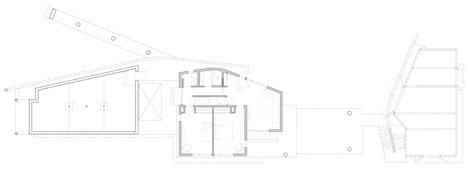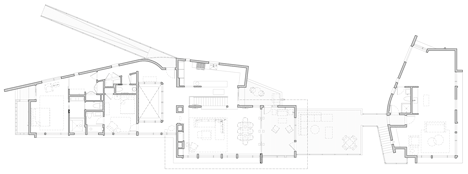Beach house by Ruhl Walker Architects designed to "curve and shift" with the landscape
This beach house by Ruhl Walker Architects is raised above the landscape, helping it to have a minimal impact on the fragile coastal ecosystem of its Cape Cod setting (+ slideshow).
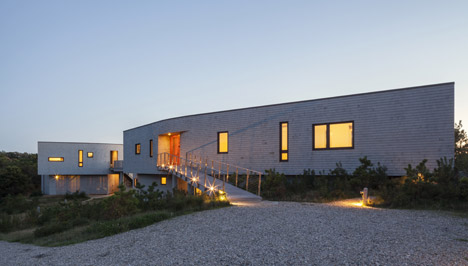
Encompassing 2,800 square feet (260 square metres), the House of Shifting Sands sits on a sloped waterfront site in the small Massachusetts town of Wellfleet, located in the hook-shaped peninsula known as Cape Cod.
The home is surrounded by miles of undeveloped land and scrub pines.
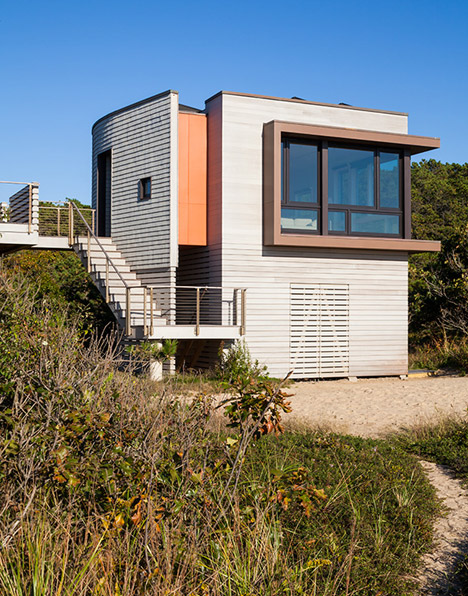
Boston-based Ruhl Walker Architects was charged with creating a building that honoured environmental concerns expressed by the client, the town's conservation commission and the US National Park Service.
This prompted the team to plan a building that "appears to float out of and above its shifting, sandy site".
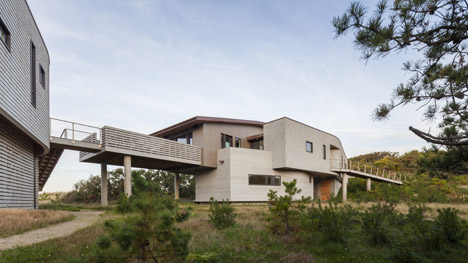
"From the beginning of design it was critically important to us and to our clients that the house fit into its fragile site seamlessly," said the designers.
"Our team responded with great care by designing the house to curve and shift softly with the natural topography."
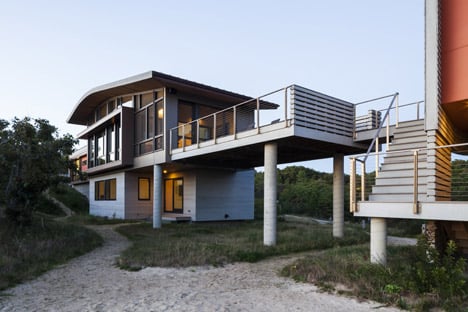
The team also conceived a landscaping scheme featuring native, drought-resistant plants. According to the design team, these plants will grow over time to visually merge with the house.
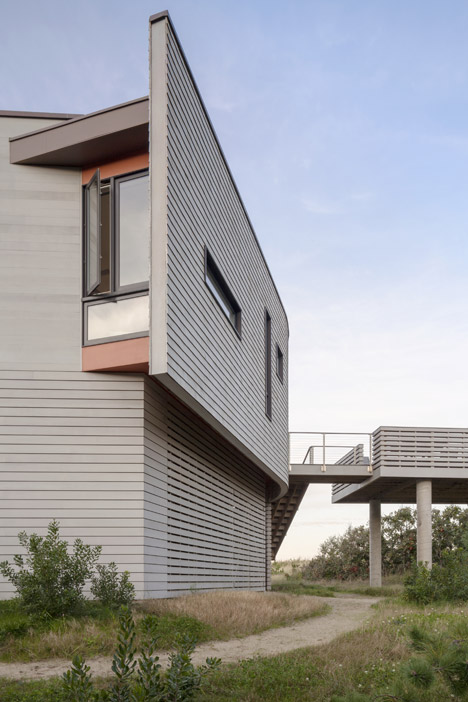
The house is oriented to maximise views and summer breezes – but also to minimise its exposure to winter storms. The designers described the overall layout as a series of overlapping, cantilevered planes and volumes. There are organised around a central block topped with an arched, copper roof.
The central volume contains the main living and dining spaces while bedrooms are located in an adjoining wing.

On the exterior, the upper portions of the dwelling are sheathed in cedar shingles, while lower volumes are clad in tongue-and-groove cedar boards. The elevation facing Cape Cod Bay features window walls that provide sweeping views.
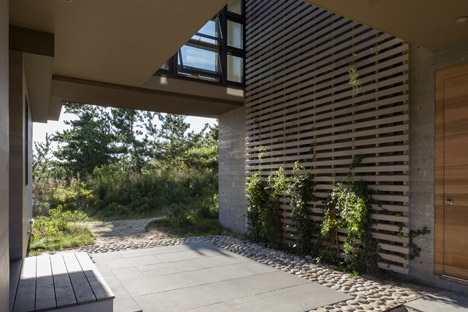
Visitors enter the residence via a long wooden ramp. "In the middle of the house, just inside the front door, is an architectural 'hole' that allows the house to breathe and cool itself naturally most of the year through its floor-to-ceiling awning windows," said the designers.
Lining one wall of this passageway is a trellis with evergreen and flowering plants.
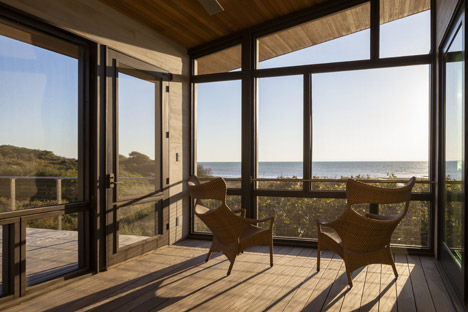
In addition to the main house, the architects designed a detached building with a loft-style studio on the upper level and a storage area below.
Accessed via a raised walkway, the 800-square-foot (74 square metre) studio is used for practising yoga, creating art and meditating. The ground-level storage area is used for boats and beach gear.
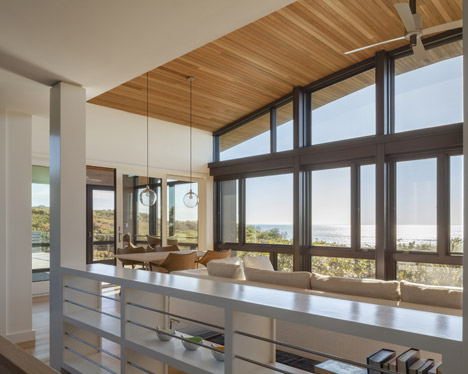
"Our clients dreamed of a house that would work equally well as both a year-round family 'camp' and also as a 'thinking retreat' for collaborating with their colleagues," said the designers.
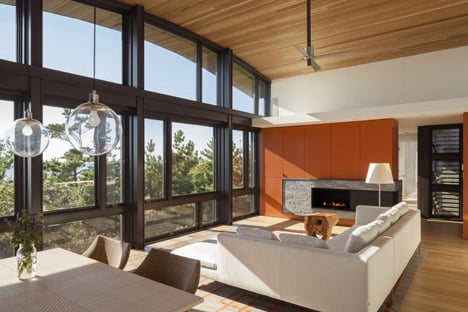
The architects created additional structures throughout the site that lend to the property's camp-like atmosphere.
There is a small, hilltop shed with running water – and an espresso machine – that can be used for working and contemplation.
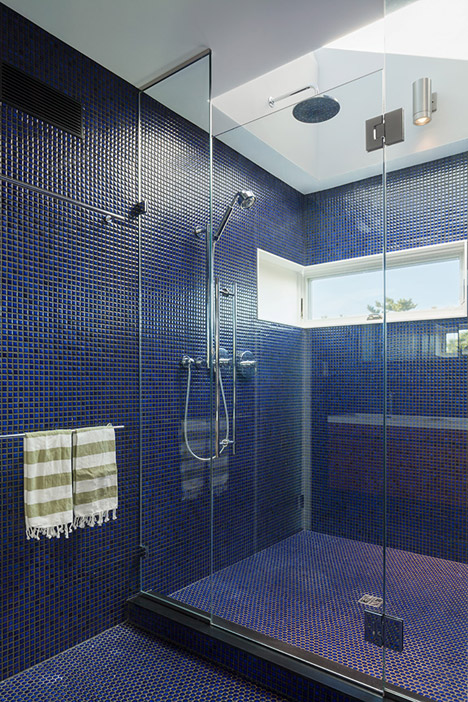
Visitors can play basketball on a small court built into a hillside, or lounge in a hot tub built into a wooden deck. Another deck was constructed to accommodate tents.
Other features include outdoor showers near a path to the beach, two separate fire pits, and a shaded dining area.

The house was designed to be provide all of its own energy. Power is supplied via solar panel arrays located on the roofs of the main house and studio. There are also high-efficiency air-to-air heat exchangers and energy-recovery ventilators.
Photography is by Jane Messinger.
Project credits:
Architecture: Ruhl Walker Architects
Structural engineering: Richmond So Engineering
HVAC: Allied Consulting Engineering Services
Solar: My Generation Energy
Landscape architects: Horiuchi Solein
Construction: Sea Dar
